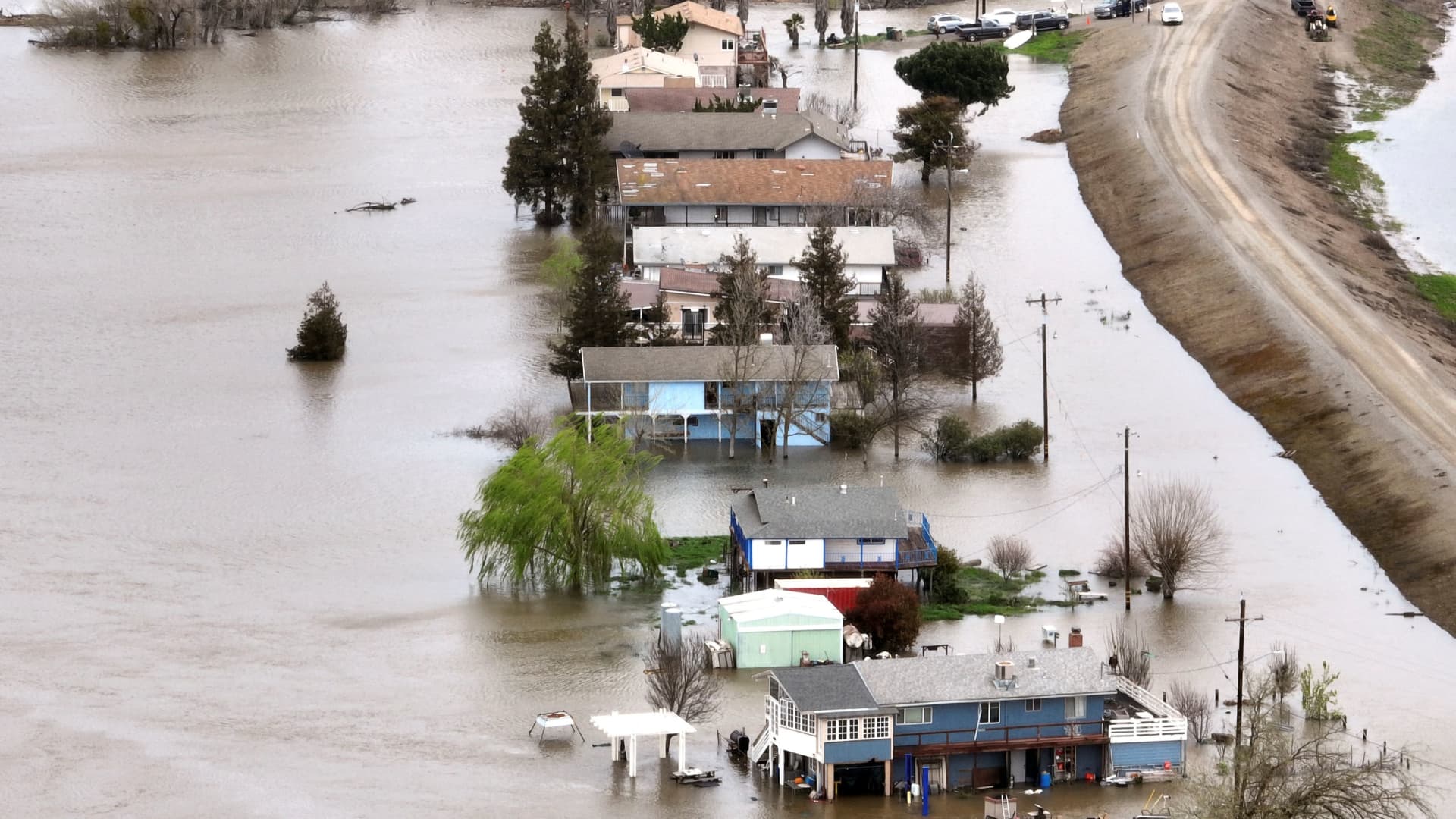Products You May Like
Global warming has already caused irreversible damage to the earth’s ecosystems and communities, according to a critical report just issued from the United Nations Intergovernmental Panel on Climate Change.
The damage is extending to the U.S. housing market, which just saw unprecedented snow and flooding in California, as well as unusual winter tornados in the south. All that came after one of the worst hurricanes on record in Florida last year.
These changes have profound implications for the nation’s nearly $12 trillion mortgage market.
Hurricane winds are getting stronger, common storms are getting wetter, wildfires are spreading faster —and millions of U.S. homes sit in the path of all of it. But the housing market currently doesn’t price that climate risk into home values. U.S. homes exposed just to flood risk may now be overvalued by roughly $200 billion, according to research recently published in the journal Nature Climate Change.
Fannie Mae, which backs more than 40% of all residential mortgages, could face much of that risk. The mortgage giant’s chief climate officer, Tim Judge, says mortgage underwriting does not currently account for climate risk. So he is mounting a major effort — really a defense — to figure out the exact climate risk to Fannie Mae’s balance sheet, so that it can ultimately incorporate that risk into mortgage underwriting.
“I think there’s still more that we have to do, and I think we just don’t have the analytics yet to do it,” said Judge.
To help, Judge is hiring climate risk modeling firms, such as First Street Foundation and Jupiter Intelligence, as well as others, to figure out just how to factor climate risk into home values and mortgage underwriting.
First Street, for example, looks at climate risk from floods, fire and wind, and brings it down to an individual property level. Jupiter studies neighborhoods and communities.
But the work can’t come fast enough. New research from CoreLogic shows that on the current climate trajectory, the estimated number of U.S. homes significantly impacted by climate-related disasters will rise from less than a million in 2030 to over 62 million by 2050. In value, that’s losses of just under $200 million to close to $9 billion in any given year.
Consumers are largely unware of potential future costs from climate-related disasters. Mortgage lenders are also struggling to figure out the financials.
“It is a massive challenge for all of us to really think about,” said Kristy Fercho, head of mortgage lending at Wells Fargo.
She also says climate risk may need to be factored into mortgage underwriting.
“To date, it hasn’t. I think it’s something that we’re evaluating like the industry is,” Fercho added.
Fercho just finished a term as chair of the Mortgage Bankers Association, which issued a special report from its research institute in 2021 saying, “Climate change may increase mortgage default and prepayment risks, trigger adverse selection in the types of loans that are sold to the GSE’s [Fannie Mae and Freddie Mac], increase the volatility of house prices, and even produce significant climate migration.”
Fercho agreed, “It’s certainly impacting how we’re thinking about mortgages and what we need to do.”
The problem is the models from the different firms, as well as from government agencies like FEMA, all vary widely, and Judge says that has made the project harder than he expected.
So far, Judge says, Fannie Mae has learned that climate impact varies widely across the country but impacts vulnerable communities far more than affluent ones. It echoes the UN report, which found the impact of climate change is worst in the world’s poorest nations and islands, which are home to about 1 billion people but account for less than 1% of greenhouse gas emissions.
But Fannie Mae is not yet rejecting any mortgages based solely on climate risk.
“No, we’re not there yet,” he said. “The first step is understanding what the damage will be to each property. The second step is how is that going to change our behavior? And how is that going to change valuation of properties? That’s a lot of the work we have to do. Is it five years away? I’m not sure.”
